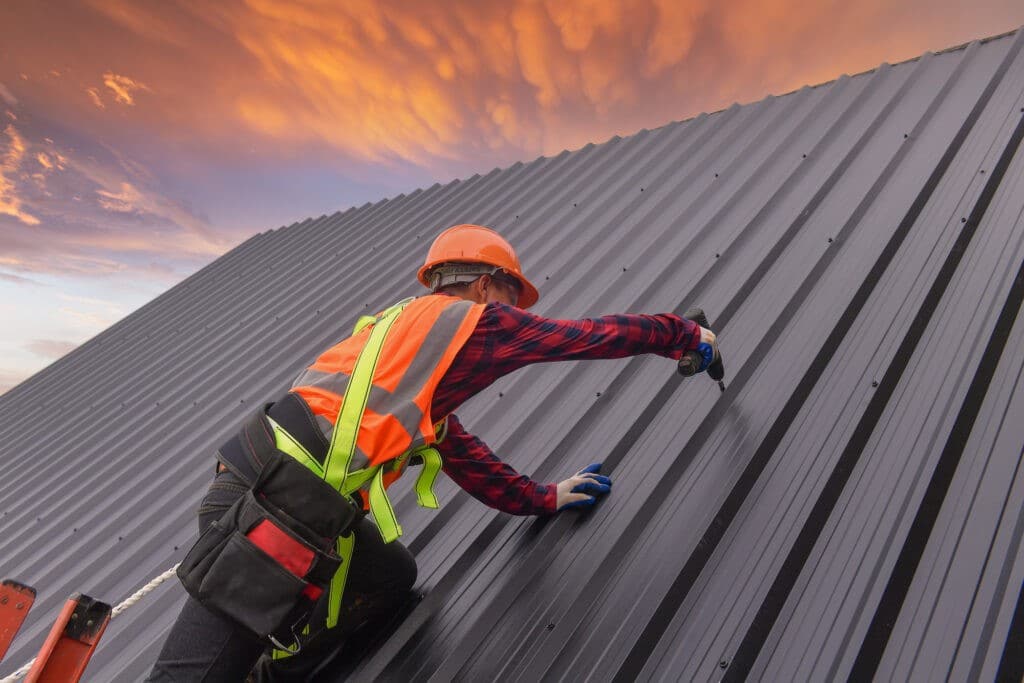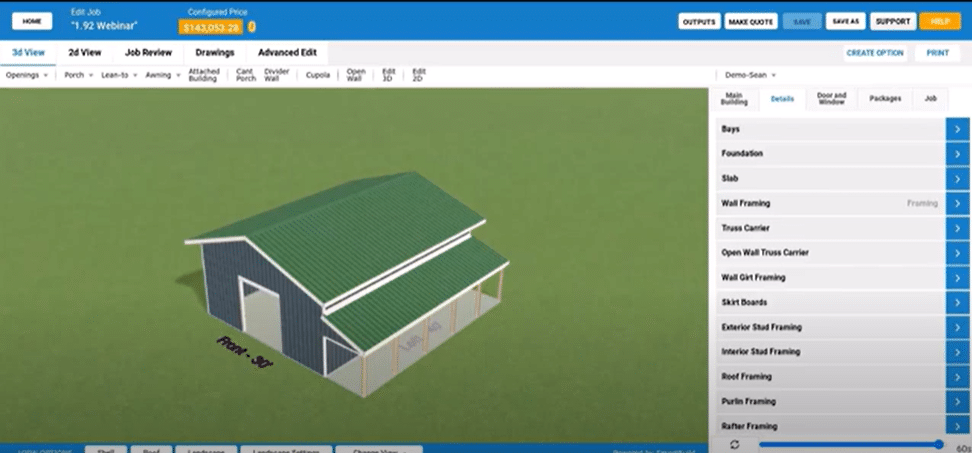Spring has just sprung, making it a great time to perform your annual metal roof maintenance! Metal roofs are known for their durability, longevity (40-70 years!), and low maintenance requirements; however, like any other part of a home, they require some attention to ensure they stay in tip-top condition. A spring inspection will reveal any damage that occurred over the winter and give you ample time to schedule repairs during the milder summer weather.
In this guide, we’ll explore the steps you should take for effective metal roof maintenance. By incorporating these practices into your annual routine, you can prevent potential damage and extend the life of your metal roof, saving you time and money in the long run.
Annual Inspection
One of the key aspects of metal roof maintenance is conducting regular inspections. Climbing onto your roof may not be your favorite task, but it’s important to identify any issues early on to avoid small repairs escalating into major projects.
Items to check during your annual roof inspection:
- Look for loose or damaged panels
- Check for any corrosion
- Ensure all fasteners are securely in place
- Flashing around plumbing vents and chimneys should not be rusty, cracked, or loose
Clean Debris
While metal roofs are resistant to many issues, they are not immune to the accumulation of debris, such as leaves, branches, and dirt. Regularly clearing debris from your roof will prevent drainage issues and minimize the risk of corrosion. Use a broom or leaf blower to clear off debris, and be cautious not to scratch the surface of the metal.
Address Rust Immediately
Although metal roofs are known for their resistance to rust, it can occur, especially in areas with high humidity or coastal regions. If you notice any signs of rust, address it immediately. Patches of rust should be removed with a wire brush and coated with a rust-inhibiting primer. Prompt action can help preserve your metal roof’s aesthetic appeal and structural integrity.
Gutter Maintenance
Proper gutter maintenance is important for any roofing system, and metal roofs are no exception. Ensure that gutters are debris-free and securely attached to the roof. Cleaning leaves and debris from your gutters in the fall is also recommended. Clogged gutters can lead to water backup, potentially causing damage to the roof and even your home’s foundation. Regularly clean and inspect your gutters to avoid any issues.
Trim Overhanging Branches
Now that you’ve cleaned the leaves and debris off the roof and out of the gutters, trimming overhanging branches will work in your favor, so there aren’t as many leaves to clean next year. Additionally, overhanging branches can pose a threat to your metal roof, especially during storms or windy conditions. This proactive step can reduce the risk of branches scratching or denting the metal surface.
While metal roofs are known to be low maintenance, they won’t rot, warp, or crack like wood or asphalt shingles and are not susceptible to insect damage; they do need an annual check-up. By incorporating the practices from this blog into your regular home maintenance schedule, you can enjoy the benefits of a durable and long-lasting metal roof for years to come.
RoofingPassport from SmartBuild Systems
With RoofingPassport from SmartBuildSystems, you can create complete metal roofing bids in just 5 minutes without leaving your office. This one-click roof estimate software for residential and commercial builders provides highly accurate roof measurements and gives contractors complete control over the entire roofing process.
Get in touch with SmartBuild Systems today to learn how RoofingPassport can help elevate your roofing business and streamline your bidding process.






